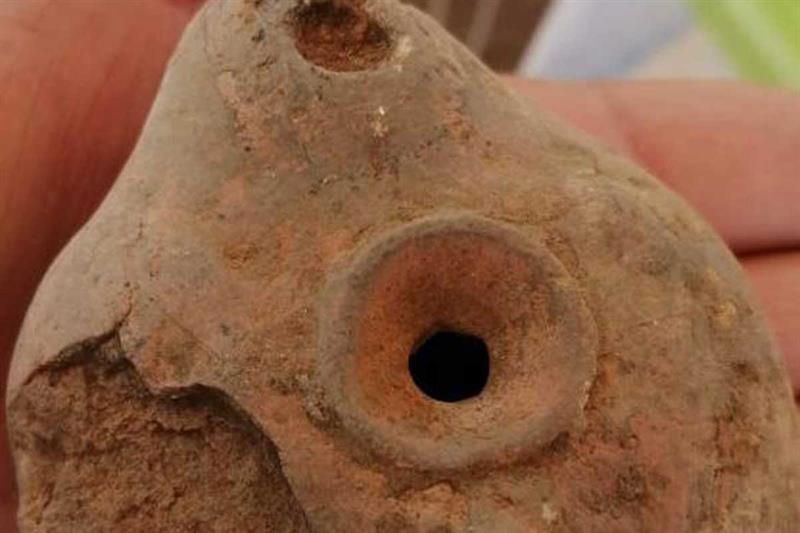Byzantine-era artifacts uncovered under Andraos Palace in Luxor: Supreme Council of Antiquities
Nevine El-Aref , Sunday 17 Oct 2021
A collection of amphoras and lamps from the Byzantine era have been uncovered over the past month under the Tawfiq Andraos palace.

The discovery is one of several ancient treasures uncovered beneath the palace after its demolition a month ago, including a collection of bronze Roman coins, remains of a Roman wall, and a collection of icons from different ages, according to Secretary-General of the Supreme Council of Antiquities Mostafa Waziri.
The decision to demolish the palace was taken by the Luxor governorate after the committee assigned to investigate its condition decided that its unstable foundation threatened both the neighbouring Luxor Temple and pedestrians walking along the Nile cornice since it could have collapsed at any time.
The palace is not considered a monument as it is not listed on Egypt's Heritage List.
Andraos Bishara was one of the most prominent figures in Luxor in the early 20th century. Upon his arrival in Luxor from his hometown of Qus in the 1880s, he decided to build his family home in the precincts of the Luxor Temple with a view across the Nile to the Theban Necropolis.
He invested part of his fortune in buying land that extended as far as the Colossi of Memnon on the west bank at Luxor. His son Tawfiq gradually became a key figure in the town and built his own house beside his father's, which was earlier demolished.
The son's palace was inhabited by the Andraos family until 2013 when the bodies of Tawfiq's two daughters were found dead, believed to have been murdered, inside. Since then, the palace has been abandoned.
-- Sent from my Linux system.
No comments:
Post a Comment